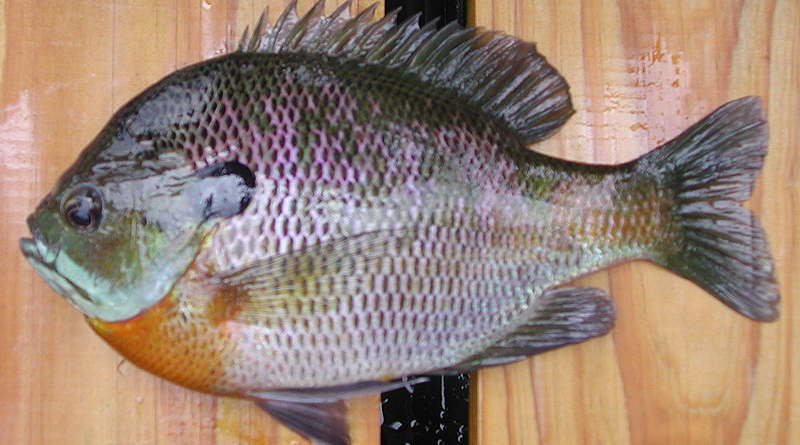Bluegill – How to Target One of NY’s Most Fun (and Underrated) Fish
Hudson Valley Bluegill: How to Target One of NY’s Most Fun (and Underrated) Fish
When it comes to freshwater fishing in the Hudson Valley, bass and trout tend to get the spotlight. But if you’re overlooking bluegill, you’re missing out on one of the most accessible, fun, and rewarding species in the region. These colorful panfish are abundant across the Hudson Valley’s lakes, ponds, and slow-moving rivers — and spring is one of the best times to target them.
What is a Bluegill?
The bluegill (Lepomis macrochirus) is a member of the sunfish family and is easily identified by its deep, pan-shaped body, small mouth, and distinctive dark flap at the rear edge of the gill cover (hence the name). Often sporting a mix of olive-green, yellow, orange, and blue hues, they’re beautiful fish — and they put up a surprisingly strong fight for their size.
Bluegill are typically small, averaging 6 to 10 inches in the Hudson Valley, but they can grow larger in the right conditions. They’re also schooling fish, which means once you find one, there’s a good chance you’ll find several.
Where to Find Bluegill in the Hudson Valley
The Hudson Valley is home to countless bluegill hotspots. Some of the best bodies of water for bluegill fishing include:
-
Lake Walton (Dutchess County) – A shallow lake with tons of weedy cover — prime bluegill territory.
-
Orange Lake (Orange County) – A warmwater fishery loaded with panfish.
-
Sylvan Lake, Morgan Lake, and the East Branch Reservoir – All popular for bass, but teeming with bluegill too.
-
Hudson River backwaters and coves – Bluegill often use slow-moving side channels and weedy pockets along the river’s edge.
Look for calm, warm areas with structure: fallen trees, lily pads, docks, submerged brush, or weed beds. Bluegill love these habitats for the cover and easy access to insects and other prey.
Bluegill Spawning Behavior in New York
Bluegill spawn once the water temperature climbs into the mid-60s — usually from late May through early July in the Hudson Valley, depending on the year. Males create shallow, saucer-shaped nests in sandy or gravelly bottoms, often grouped together in colonies. You’ll spot them easily in clear water: dozens of dark circles clustered near shorelines.
During this period, bluegill are especially aggressive. Males guard their nests fiercely, making them a prime target for anglers using small lures or live bait. Catch-and-release is encouraged during the spawn if you’re targeting larger fish, to allow them to reproduce successfully and maintain a healthy population.
Best Tactics and Gear for Targeting Bluegill
Rod & Reel Setup:
Keep it light. An ultralight spinning rod with 2-6 lb test line is perfect. The fight of a hand-sized bluegill on light tackle is one of freshwater fishing’s most underrated thrills.
Bait:
-
Live bait: Worms (especially red wigglers), crickets, and mealworms are all bluegill favorites.
-
Artificial lures: Try 1/32 oz to 1/16 oz jigs, small inline spinners, or soft plastics like micro-tubes and curly tail grubs. Ice fishing jigs (like tungsten or teardrop styles) work great in spring and summer too.
-
Fly fishing: Small poppers, nymphs, and wet flies can be deadly on bluegill when fished with a 2-4 weight fly rod.
Techniques:
Cast near structure or visible beds in the spring and slowly retrieve your lure or bait. If you’re using a bobber rig, suspend a worm or jig just a foot or two beneath the surface and let it sit with occasional twitches. Bluegill often strike suddenly.
Why Bluegill Deserves More Love
Bluegill are:
-
Great for beginners and kids due to their abundance and willingness to bite.
-
Excellent on the table (though you’ll need a few to make a meal).
-
A vital part of the aquatic ecosystem and forage base for larger predators.
-
Surprisingly fun to catch, especially on fly rods or ultralight gear.
So next time you’re thinking of hitting the water in the Hudson Valley, give bluegill a shot. Whether you’re fishing for food, fun, or just to shake off the winter rust, these little scrappers bring big rewards.
Last Updated on April 8, 2025 by Fish HV Contributors



